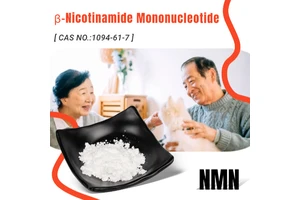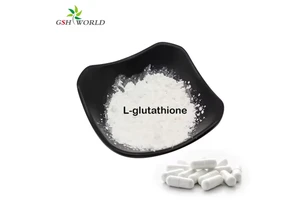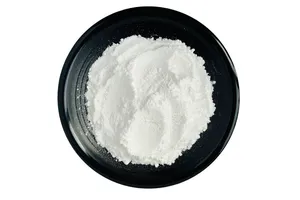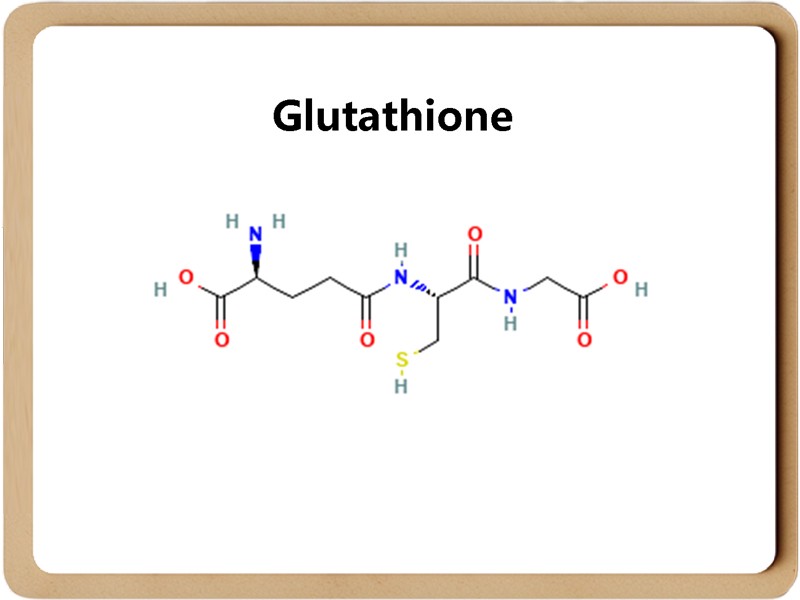important regulatory effect of glutathione on proliferation potential of red pine germ cells
in 2022, an article titled "Glutathione Plays a Positive Role in the Proliferation of Pinus" was published in the International Journal of Molecular Sciences "koraiensis Embryogenic Cells"
In this paper, the embryonic calus tissue of Pinus koraiensis Sieb. et Zucc. Was used as the material. The cell line 001#-001 (F) with high proliferative potential and the cell line 001#-010 (S) with low proliferative potential were selected for combined transcriptomic and metabolomic analysis. And the target genes and differential metabolites were screened.

Exogenous addition of GSH can promote the proliferation of callus (EC) in F and S cell lines, while its glutathione synthesis inhibitor 1-butylthionine-sulfoxide (BSO) inhibits the proliferation of EC, further verifying the important regulatory role of glutathione in the proliferation potential of red pine germ cells.
Research has found that glutathione (GSH) -related genes and metabolites play an important regulatory role in the proliferation of red pine embryonic callus.
Intracellular glutathione is one of the important reasons for the differences in proliferation ability among different embryonic cell lines.
Research Background
Red pine (Pinus koraiensis Sieb. et Zucc.) is an important timber and nut economic forest tree species in East Asia, and its somatic cell embryogenesis technology system has been initially established.
The proliferation process of EC is not only an important step in somatic cell embryogenesis, but also an important material for large-scale production and genetic transformation.
Under the same culture conditions, there are significant proliferation differences among different red pine cell lines, and the intrinsic regulatory mechanism remains unclear.
In view of the differences in proliferation potential among different embryonic cell lines of red pine, this study used cell lines with high and low proliferation potential as experimental materials for transcriptomic and metabolomics research, constructed a transcriptomic and metabolomics information platform for embryonic callus, analyzed the expression information of specific genes during the proliferation process of EC, and explored the key genes regulating the proliferation potential of EC. Discover the key metabolites that affect proliferative capacity.
This will provide a scientific basis for enhancing the proliferation potential of embryonic cells in red pine and improving the efficient plant regeneration system of red pine, laying the foundation for large-scale breeding of red pine, and offering new evidence for revealing the regulatory mechanism of EC proliferation in coniferous trees.
Research results
The proliferation potential of different embryogenic cell lines of red pine varies.
1. Proliferation and cytological observation of cell lines with different proliferation capabilities
The epigenetic morphology of F and S cell lines is different.
The number of filamentous early somatic embryos on the surface of the F cell line is relatively large (Figure 1,a), the EC is generally transparent, and the proliferation rate is relatively fast (the proliferation rate is 740.00±51.96a), while the number of filamentous early somatic embryos in the S cell line is relatively small (Figure 1,b).
There were a few brown spots on the surface of the callus, and the proliferation rate was relatively slow (the proliferation rate was 425.00±20.21 b, which was 57.4% of that of the F cell line).
Cytological observations revealed the presence of a large number of early somatic cell embryos (Figures 1, c, and d), and it was found that the edges of the blastocyst head (eh) and blastocyst stalk (es) of the F cell line were clearer than those of the S cell line (Figure 1).
 Figure 1 Macroscopic structure and cytological observation of embryonic callus of red pine cells, F line and S line
Figure 1 Macroscopic structure and cytological observation of embryonic callus of red pine cells, F line and S line
Note: Macroscopic structure of a: F cell line, bars =1 cm; Macroscopic structure of b: S cell line, bar =0.5 cm; Cellular structure of c: F cell line, bar=150 μm; Cytological structure of d: S cell line, bar=150 μm; The letter "eh" represents the embryo head (eh), and the letter "s" represents the embryo stalk (es).
2. Transcriptome analysis
Screening of differentially expressed genes
A total of 1,883 differentially expressed genes were found in F and S cell lines, among which 115 KEGG pathways were annotated (Figure 2), and 17 glutathione-related genes were identified (Figure 3).
There are 8 genes in the GST family (glutathione S-transferase), 3 genes in the GULO family (L-gulolactone oxidase), 1 gene in the CARP family (leucoylaminopeptidase), ODC1 (ornithine decarboxylase), PGD (6-phosphogluconate dehydrogenase), and 1 gene in the DHAR family (glutamate dehydrogenase/transferase), and 2 genes in the AAO family.
A total of 14 differentially expressed genes were down-regulated and 3 differentially expressed genes were up-regulated.
Overall, the DEGs(14) related to glutathione between F and S cell lines mostly showed a downward trend, while only a few differentially expressed genes (3) showed an upward trend.
 Figure 2 Classification of KEGG pathways for differentially expressed genes in two cell lines of red pine
Figure 2 Classification of KEGG pathways for differentially expressed genes in two cell lines of red pine
 Figure 3 shows the clustering heat map of glutathione-related differential genes between two cell lines of red pine
Figure 3 shows the clustering heat map of glutathione-related differential genes between two cell lines of red pine
(2) Analysis of genes related to hormone metabolism
Through the observation of transcriptome data, it was found that many DEGs are involved in plant hormone signal transduction pathways, mainly involving the metabolic pathways of IAA and cytokinin biosynthesis.
In this study, genes that play a role in the anabolism, transport and signal transduction of these two hormones were selected for specific analysis.
Specific analysis of auxin related genes was conducted, and a total of 7 auxin related DEGs were found between the F and S cell lines (Table 1).
Analysis of genes related to cell division revealed that there were two differentially expressed genes related to cytokinin in the F and S cell lines (Table 1).
(3) qRT-PCR verification
Twelve DEGs related to glutathione and auxin between the F and S cell lines of red pine were selected for qRT-PCR verification. The gene functions are shown in Table 2.
Except for c187045.
The expression trends of the graph_c0 gene and the other 11 DEGs were similar to the results of RNA-Seq, indicating that the differentially expressed genes obtained by sequencing in this study were reliable.
3. Metabolomics analysis
There are 412 differentially expressed metabolites between the F cell line and the S cell line (Figure 4), and the glutathione metabolic pathway accounts for a relatively high proportion in the KEGG pathway, with 9 differentially expressed metabolites (Figure 5).
 Figure 4 Volcanic atlas of differential expression of metabolites in two cell lines of red pine
Figure 4 Volcanic atlas of differential expression of metabolites in two cell lines of red pine
 Figure 5 shows the clustering heat map of the differential metabolites related to glutathione among pine trees
Figure 5 shows the clustering heat map of the differential metabolites related to glutathione among pine trees
4. Combined analysis of metabolomics and transcriptomics
The selected genes and metabolic pathways were analyzed preferentially (P<0.05).
The KEGG co enrichment results are shown in Figure 6.
It can be seen that differentially expressed genes and metabolites are co-enriched in the 68 KEGG pathways.
 Figure 6 shows the co-enrichment spectra of differential metabolites and differential genes in two cell lines of red pine
Figure 6 shows the co-enrichment spectra of differential metabolites and differential genes in two cell lines of red pine
Canonical correlation analysis (CCA) was conducted on the differentially expressed genes and metabolites related to glutathione to further explore the genes most relevant to the metabolites.
5. Verification
The intracellular glutathione content of F and S cell lines was determined, and the results are shown in Figure 8, which is consistent with the analysis and speculation of transcriptome and metabolome data.
The contents of glutathione and T-GSH in F cell line cells were significantly higher than those in S cell line cells.
The content of GSSG and the ratio of GSH/T-GSH were both higher than those of S cells, but the difference was not significant.
The results of this study verified the findings of transcriptomic and metabolomics analyses.
 Figure 8 shows the intracellular glutathione content of red pine F and S cell lines
Figure 8 shows the intracellular glutathione content of red pine F and S cell lines
Exogenous addition of Glutathione promoted the proliferation of EC in F and S cell lines, while exogenous BSO inhibited the proliferation of EC, further verifying the results of transcriptomic and metabolomics analyses.
Glutathione-related genes and metabolites play an important regulatory role in the proliferation of red pine embryonic callus.
Intracellular glutathione is one of the important reasons for the differences in proliferation ability among different embryonic cell lines.
This study laid the foundation for revealing the regulatory mechanism of cell proliferation and totipotency expression in woody plants, establishing techniques to enhance the EC proliferation potential of woody plants, and optimizing the somatic cell structure of woody plants.
Commentary
This study, through multi-omics integrated analysis, systematically revealed the core regulatory role of glutathione metabolism in the proliferation of red pine germ cells.
It not only clarified the positive correlation between glutathione content and cell proliferation ability, but also provided functional verification through intracellular content determination and exogenous addition and inhibitor experiments.
The research results provide a theoretical basis and potential targets for enhancing the proliferation efficiency of red pine germ cells and optimizing the somatic embryogenesis technology system.
Glutathione, as an antioxidant in plants, combines with GST to enhance the stress resistance of plants. In the future, the cross-regulatory network of glutathione and other hormone signaling pathways can be further explored to provide verification evidence that the stress resistance of F cell lines is higher than that of S cell lines.
Source: DOI: 10.3390/ijms232314679











